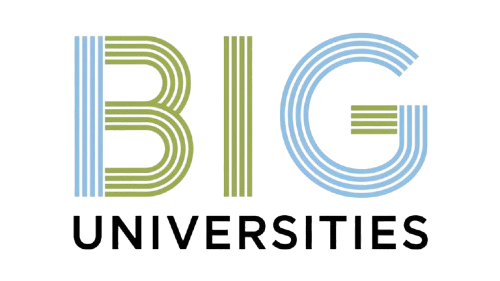
The advent of gene editing technologies like CRISPR-Cas9 has ushered in an era of unprecedented biological control, offering remarkable therapeutic promise for debilitating genetic conditions such as sickle cell disease or Huntington’s. But, this revolutionary capability also confronts humanity with profound ethical implications of biotechnology. The controversial germline edits performed on human embryos, as seen with the edited twins in China, starkly highlight the urgent need to navigate the line between disease eradication and potentially irreversible alterations to the human gene pool. As scientific advancements continue to outpace regulatory and societal consensus, understanding the complex ethical landscape—from equitable access to the very definition of human enhancement—becomes critically essential for informed public discourse and policy development.

The Dawn of Gene Editing: A Primer
Imagine a world where genetic diseases are not just managed. cured at their root. A world where crops are naturally resistant to pests and droughts, reducing the need for harmful pesticides. This isn’t science fiction; it’s the promise of gene editing. At its heart, gene editing is a revolutionary set of technologies that allows scientists to make precise changes to an organism’s DNA, the very blueprint of life. Think of it like a highly advanced word processor for genes, capable of cutting, pasting. replacing specific sections of genetic code.
The most celebrated and widely used gene-editing tool is CRISPR-Cas9 (Clustered Regularly Interspaced Short Palindromic Repeats and CRISPR-associated protein 9). Discovered in bacteria as a natural defense mechanism against viruses, CRISPR-Cas9 has been repurposed by scientists into an incredibly powerful and relatively easy-to-use gene-editing system. Here’s a simplified breakdown:
- CRISPR: The Guide: This is a short RNA molecule designed to match a specific sequence of DNA in the genome. It acts like a GPS, guiding the Cas9 protein to the exact target location.
- Cas9: The Scissors: This is an enzyme, a molecular “scissor,” that cuts both strands of the DNA at the location specified by the guide RNA.
Once the DNA is cut, the cell’s natural repair mechanisms kick in. Scientists can then exploit these repair pathways to either disable a faulty gene, insert a new gene, or correct a genetic mutation. While CRISPR-Cas9 is the star, other gene-editing technologies exist, such as TALENs (Transcription Activator-Like Effector Nucleases) and ZFNs (Zinc Finger Nucleases). CRISPR’s precision, efficiency. cost-effectiveness have made it the go-to tool for most research and therapeutic applications.
Why Gene Editing is a Game-Changer: Real-World Applications
The potential of gene editing spans across medicine, agriculture. even environmental conservation. Its ability to precisely alter DNA opens doors to solutions previously thought impossible. Let’s explore some of the most impactful applications:
Therapeutic Applications: Healing at the Genetic Level
Perhaps the most compelling use of gene editing is in treating human diseases, especially those caused by single gene defects. Imagine a child born with sickle cell anemia, a painful and debilitating blood disorder. Instead of managing symptoms, gene editing offers the prospect of correcting the underlying genetic error in their bone marrow stem cells, potentially offering a one-time cure. Similar research is underway for a wide range of conditions, including:
- Cystic Fibrosis: Correcting the faulty gene responsible for mucus buildup in the lungs and other organs.
- Huntington’s Disease: Silencing the gene that causes neurodegeneration.
- Cancer: Enhancing immune cells to better target and destroy cancer cells (CAR T-cell therapy is a prime example).
- Blindness: Restoring vision by correcting genetic mutations in retinal cells.
A notable real-world example is the ongoing clinical trials for CRISPR-based therapies for sickle cell disease and beta-thalassemia. Patients like Victoria Gray have received experimental treatments that involve editing their own stem cells outside the body and then reinfusing them, showing promising results in reducing or eliminating the need for blood transfusions and managing disease symptoms. These advancements highlight the immense therapeutic promise. also bring into sharp focus the complex Ethical implications of biotechnology.
Agricultural and Environmental Applications: A Greener Future?
Beyond human health, gene editing is transforming agriculture, offering sustainable solutions to global food challenges:
- Disease Resistance: Developing crops like blight-resistant potatoes or fungus-resistant wheat, reducing reliance on chemical sprays.
- Enhanced Nutrition: Creating crops with higher vitamin content (e. g. , Golden Rice, though developed through traditional genetic modification, showcases the potential).
- Climate Resilience: Engineering plants to better withstand droughts, floods, or extreme temperatures.
- Pest Control: Developing gene drives to control mosquito populations that carry diseases like malaria.
These applications hold the promise of increasing food security and reducing environmental impact. they also raise questions about ecological balance and unforeseen consequences.
Navigating the Ethical Labyrinth: Core Concerns
While the potential benefits of gene editing are profound, its power necessitates a careful examination of its Ethical implications of biotechnology. This isn’t just about scientific feasibility; it’s about societal values, human dignity. the future of our species. The discussions surrounding these ethical considerations are multifaceted and often deeply personal.
Safety and Unintended Consequences
The primary concern is safety. While CRISPR is precise, it’s not perfect. “Off-target” edits can occur, where the Cas9 enzyme cuts DNA at unintended locations, potentially leading to unforeseen health problems. There’s also the risk of “mosaicism,” where only some cells are successfully edited, leading to a mix of edited and unedited cells with uncertain long-term effects. For example, if we edit genes in a human embryo, any off-target edits would be passed down to future generations, making it a permanent change for an entire lineage.
Equity, Access. the Specter of “Designer Babies”
Who will have access to these life-altering technologies? If gene editing becomes a highly effective treatment for common diseases, will it be affordable and accessible to everyone, or only to the wealthy? This raises the serious concern of exacerbating health disparities and creating a “genetically privileged” class. The concept of “designer babies”—editing embryos not just to cure disease but to enhance traits like intelligence, athletic ability, or appearance—is a particularly contentious ethical frontier. This crosses the line from therapy to enhancement, touching upon deep philosophical questions about human nature and identity.
Human Dignity and “Playing God”
For many, the ability to alter the human germline (changes that are heritable and passed down to future generations) raises profound questions about human dignity and tampering with the fundamental building blocks of life. Some argue that this crosses an ethical red line, often invoking the phrase “playing God.” This perspective emphasizes the intrinsic value of human life as it is, without genetic modification. cautions against hubris in altering what is naturally given.
Somatic vs. Germline Editing: A Critical Distinction
One of the most crucial distinctions in gene editing ethics is between somatic cell editing and germline editing. Understanding this difference is key to grasping the varying ethical stakes:
| Feature | Somatic Cell Editing | Germline Editing |
|---|---|---|
| What it targets | Non-reproductive cells (e. g. , blood cells, muscle cells) | Reproductive cells (sperm, egg) or embryos |
| Inheritability | Changes are NOT passed on to future generations | Changes ARE passed on to future generations |
| Ethical Consensus | Generally considered ethically acceptable for therapeutic purposes, subject to safety and efficacy. | Highly controversial and largely prohibited in many countries due to profound ethical concerns. |
| Example Use Case | Curing sickle cell disease in an adult patient by editing their bone marrow cells. | Correcting a gene mutation in an embryo to prevent a genetic disease in a future child and all their descendants. |
While somatic cell editing is progressing rapidly in clinical trials with broad ethical acceptance (assuming safety), germline editing remains largely taboo due to its permanent and heritable nature. The birth of the world’s first CRISPR-edited babies in China in 2018, whose germlines were altered, sparked global outrage and condemnation, highlighting the urgent need for international ethical guidelines.
Informed Consent
A cornerstone of medical ethics, informed consent takes on new dimensions with gene editing. For somatic therapies, ensuring patients fully grasp the experimental nature, potential risks. unknown long-term effects is paramount. For germline editing, the ethical challenge is even greater: how can future generations consent to changes made to their genetic code before they are even born?
The Slippery Slope: Potential Misuses and Unintended Consequences
The ethical concerns around gene editing extend beyond immediate safety and access to broader societal implications. The “slippery slope” argument posits that allowing certain uses of gene editing, even those seemingly benign (like curing severe diseases), could gradually lead to more problematic applications, such as widespread genetic enhancement or even a new form of eugenics.
Enhancement vs. Therapy: Where Do We Draw the Line?
This is perhaps the most debated ethical boundary. Therapeutic gene editing aims to restore normal function (e. g. , correcting a gene that causes blindness). Enhancement, But, seeks to improve existing traits beyond what is considered “normal” (e. g. , increasing muscle mass, boosting IQ, or altering appearance). Critics worry that if we open the door to enhancement, it could lead to societal pressure to conform to certain genetic ideals, blurring the lines between medical necessity and consumer preference. What starts as a cure for a debilitating disease could, theoretically, evolve into a market for “designer traits.”
Eugenics Concerns: A Dark Shadow from History
The history of eugenics, the discredited movement to “improve” the human race through selective breeding, casts a long shadow over gene editing discussions. The fear is that if societies begin to select for or against certain genetic traits, it could lead to discrimination against individuals with “undesirable” genes, reduce human genetic diversity. reinforce harmful societal biases. The potential for state-sponsored or market-driven eugenics programs, even if not explicitly labeled as such, is a deeply unsettling prospect.
Impact on Human Diversity
If gene editing becomes widespread for “correcting” perceived imperfections, could it lead to a reduction in human genetic diversity? Diversity is crucial for the resilience of a species. Removing genes that might be linked to certain vulnerabilities could also inadvertently remove genes that offer unique strengths or adaptations in different environments. This could make humanity more susceptible to future unknown threats.
National Security and Bioweapons
The precision and accessibility of gene-editing technologies like CRISPR also raise national security concerns. The dual-use nature of this technology means it could potentially be misused for developing novel bioweapons or enhancing existing pathogens, posing a significant global threat. International oversight and arms control discussions are becoming increasingly relevant in this context.
Global Perspectives and Regulatory Frameworks
Given the profound implications of gene editing, countries around the world have adopted diverse approaches to its regulation, reflecting different cultural, ethical. legal viewpoints. There is no single global consensus, leading to a complex patchwork of laws and guidelines.
- United Kingdom: The UK has a robust regulatory framework and has been a leader in establishing ethical guidelines. The Human Fertilisation and Embryology Authority (HFEA) plays a key role. While germline editing research is permitted under strict license for specific purposes (like preventing mitochondrial disease), clinical application for heritable changes is prohibited.
- United States: The US approach is more fragmented. While federal funding for germline editing is restricted, private funding is not. The FDA regulates gene therapies. there isn’t a comprehensive national law specifically governing all aspects of gene editing. Ethical guidelines often come from scientific bodies and bioethics commissions.
- China: Historically, China had fewer explicit regulations, leading to the controversial CRISPR baby case. This incident spurred the Chinese government to introduce stricter regulations in 2019 and 2021, emphasizing ethical review, safety. prohibiting human germline editing for reproductive purposes.
- Germany: Germany has some of the strictest laws against germline intervention, rooted in its history with eugenics. The Embryo Protection Act (1990) prohibits any modification of the human germline.
International scientific and ethical bodies, such as the World Health Organization (WHO) and the National Academies of Sciences, Engineering. Medicine, have issued reports and recommendations calling for global dialogue, responsible governance. a cautious approach, particularly regarding heritable germline editing. They emphasize the need for broad public engagement to ensure that societal values guide scientific progress, rather than technology dictating ethics.
Towards Responsible Innovation: Actionable Takeaways for Society
Navigating the complex Ethical implications of biotechnology like gene editing requires a multi-pronged approach involving scientists, ethicists, policymakers. the public. It’s not about stopping progress. about ensuring it’s conducted responsibly and for the benefit of all humanity. Here are some actionable takeaways:
- Foster Public Discourse and Education: The public needs to be informed about what gene editing is, its potential. its risks. Open, honest. accessible conversations are crucial to build trust and ensure that societal values are reflected in policy decisions. This isn’t just a scientific debate; it’s a societal one.
- Develop Robust Ethical Guidelines and Oversight: Establishing clear, internationally harmonized ethical guidelines and strong regulatory bodies is paramount. These bodies should be multidisciplinary, involving scientists, ethicists, lawyers. public representatives, to ensure comprehensive oversight of research and clinical applications.
- Prioritize Equitable Access: As gene therapies advance, proactive measures must be taken to ensure that these potentially life-saving treatments are affordable and accessible to all who need them, regardless of socioeconomic status. This might involve innovative pricing models, public funding, or international collaborations.
- Emphasize Therapy Over Enhancement (for now): A broad societal consensus currently exists to proceed cautiously with therapeutic applications, especially somatic cell editing, while maintaining a moratorium on germline editing for reproductive purposes. This distinction helps to manage the “slippery slope” and focus efforts on addressing unmet medical needs.
- Invest in Long-Term Safety Research: Continuous, rigorous research into the long-term effects, off-target edits. potential unintended consequences of gene-editing technologies is essential. Transparency in reporting both successes and failures is critical for building scientific knowledge and public trust.
- Promote Global Collaboration: Gene editing is a global endeavor. International cooperation in setting ethical standards, sharing research. developing common regulatory frameworks will be vital to prevent “ethical tourism” (where individuals seek gene editing procedures in countries with lax regulations) and ensure responsible global governance.
Conclusion
As we conclude our journey through the complex ethics of gene editing, remember that understanding is not a destination but an ongoing process. The rapid pace of advancements, exemplified by technologies like CRISPR, demands our continuous engagement. My own experience in observing these discussions reveals that ethical frameworks are never static; they evolve with every new scientific breakthrough and societal debate. Therefore, it’s paramount that each of us actively participates in shaping the narrative, moving beyond passive consumption of details. To contribute meaningfully, make it a personal tip to seek diverse perspectives, from scientists and ethicists to community leaders. Question the “what if” scenarios, whether it’s precision medicine for genetic diseases or enhancing human traits. consider the broader societal implications, including accessibility and potential inequities. Your informed voice is crucial in establishing responsible guidelines for this transformative field. For a deeper dive into these considerations, explore our article on Biotechnology’s Moral Compass. Ultimately, the future of gene editing rests not just on scientific prowess. on our collective commitment to navigate its ethical landscape with wisdom and foresight. Embrace this challenge; it’s a call to build a future where innovation serves humanity responsibly.
More Articles
Balancing Act: The Environmental Risks and Rewards of Genetic Engineering Explored
Green Genes: How Genetic Engineering is Revolutionizing Environmental Solutions and Sustainability
Biotechnology’s Moral Compass: Key Debates Shaping Its Future and Regulation
Navigating the Line: Understanding the Ethical Challenges of Modern Biotechnology
Unlocking the Future: A Simple Guide to What Biotechnology Truly Means Today
FAQs
What exactly do we mean by ‘the ethics of gene editing’?
It’s about the moral questions and societal implications that pop up when we talk about changing an organism’s DNA, especially human DNA. Things like safety, fairness. what it means for future generations are all part of the discussion.
Is it really okay to mess with human genes?
That’s the big debate! For treating serious diseases, many people see immense potential for good. But when it comes to making ‘improvements’ or changes that affect future generations (germline editing), things get very tricky and controversial due to unknown long-term effects and ethical lines.
What are the main ethical worries people have about gene editing?
Key concerns include safety (unintended side effects), fairness (will only the wealthy benefit?) , potential for ‘designer babies’ or genetic discrimination. the slippery slope of altering the human germline, which means changes are passed down to all future offspring.
Can gene editing help cure diseases. is that always ethical?
Yes, it holds immense promise for treating genetic diseases like sickle cell anemia or cystic fibrosis. When it’s used to correct a specific disease in a patient’s body cells (somatic gene editing), it’s generally seen as more ethically acceptable. The ethical debate usually heats up when we talk about changing genes in embryos or sperm/egg cells (germline editing) because those changes become permanent for future offspring.
What’s the deal with ‘designer babies’ – is that a real concern?
It’s definitely a major concern for many. While current gene editing isn’t really about picking eye color or height, the fear is that if we start altering human embryos for non-medical reasons, it could lead to a future where parents try to ‘enhance’ their children, potentially creating a new form of inequality or even a genetic divide.
Who gets to decide what’s allowed and what’s not with this technology?
That’s a huge challenge. There’s no single global authority. Typically, it involves a mix of national regulations, ethical guidelines from scientific and medical bodies, public discussion. international agreements. It’s an ongoing conversation trying to balance innovation with responsibility.
How do we ensure gene editing doesn’t create more inequality?
This is a critical ethical challenge. If gene editing therapies become expensive, there’s a real risk they’ll only be accessible to the wealthy, widening health disparities. Solutions involve public funding for research, equitable access policies. global collaboration to ensure benefits are shared broadly, not just by a select few.


